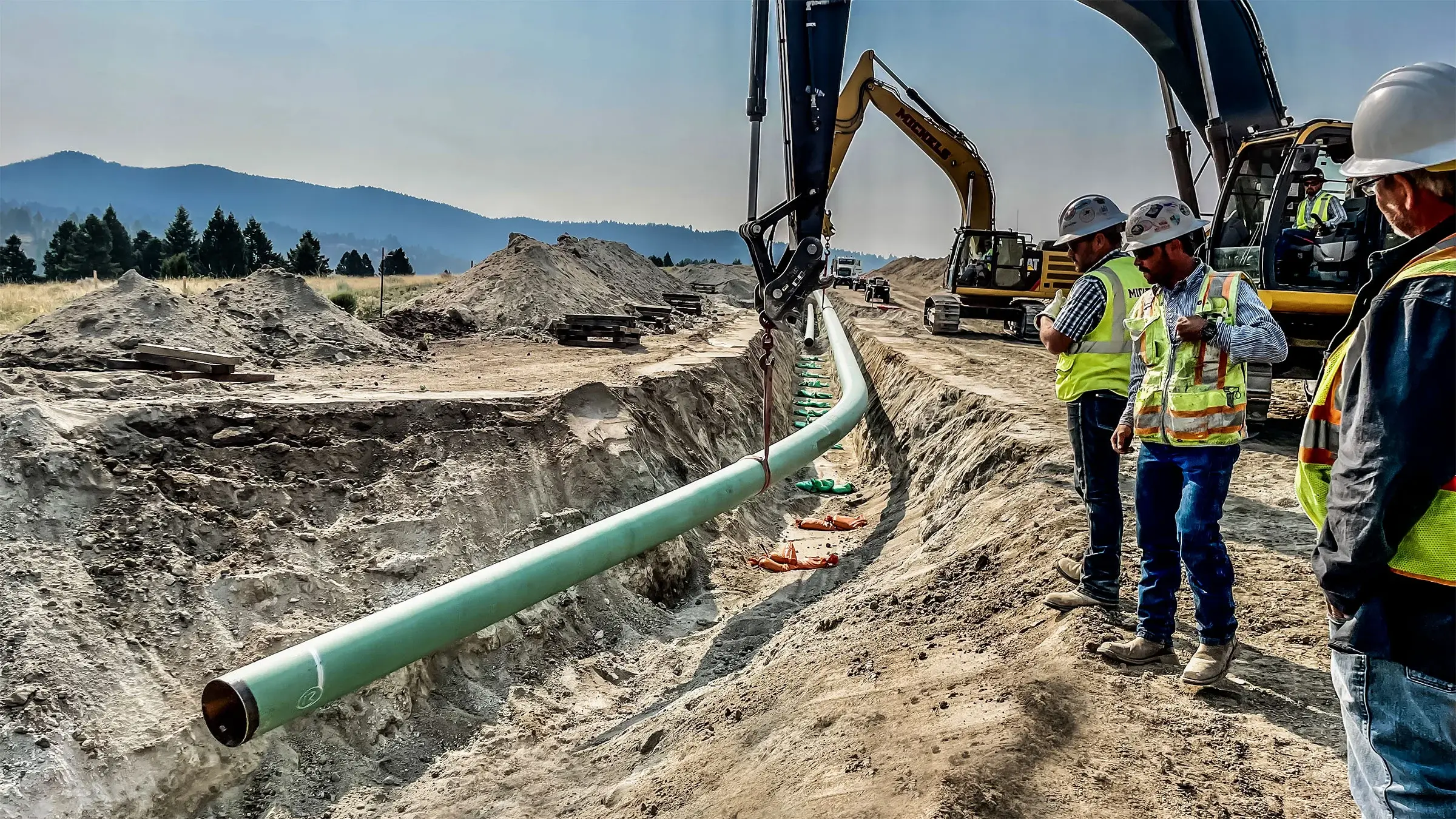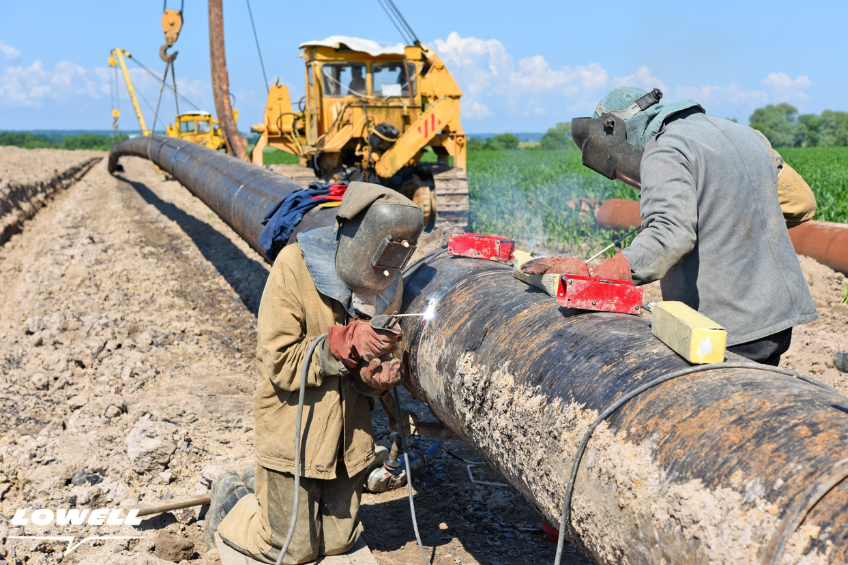The Smart Infrastructure Movement Led by Creek Pipe Pipeline Construction
Essential Tips and Finest Practices for Effective Pipelines Installments
Effective pipe installations rest on calculated preparation and adherence to best practices. Recognizing and picking suitable materials pipe sizing are important steps. Appropriate cutting and signing up with methods assure leak-free links. In addition, mindful positioning and adequate support contribute to the system's stability. Yet, lots of ignore the relevance of securing and insulation. What various other substantial variables could influence the long life and performance of a pipeline system? Checking out these elements exposes much more.

Selecting the Right Materials for Your Task
When picking materials for a piping installation, it is crucial to examine the particular requirements of the task, as different products use distinct benefits and downsides. PVC pipelines are resistant and light-weight to corrosion, making them excellent for drain systems. Conversely, copper pipelines are known for their toughness and efficiency in warm water applications, though they can be a lot more expensive.Additionally, galvanized steel pipelines supply strength and durability, yet they might deal with deterioration issues with time. The environment plays a substantial role in product option; exposure to chemicals or severe temperature levels can dictate the choice.Moreover, task budget restrictions can not be forgotten; some materials may sustain reduced initial expenses yet higher long-lasting upkeep. Ultimately, comprehending the application, ecological problems, and budget considerations will certainly lead the decision-making process, making sure the picked product aligns with the job's general objectives and requirements.
Understanding Pipe Sizing and Stress Needs
Picking appropriate materials is only one element of an effective piping installation; understanding pipe sizing and pressure demands is similarly vital. Proper pipe sizing assurances that liquid streams successfully without excessive pressure loss, which can cause system failings. Variables such as liquid temperature level, circulation, and kind rate must be considered when determining the appropriate pipe diameter.Additionally, pressure needs are essential in keeping system stability. Each application has details pressure scores that pipelines have to fulfill to stay clear of bursts or leaks. Designers often refer to standards and requirements to calculate the necessary stress rankings based on the intended usage and ecological conditions.Inadequate miscalculating or sizing pressure demands can lead to costly repairs and lowered system efficiency. As a result, comprehensive evaluation and preparation are important to achieve excellent outcomes in pipes installments, ensuring longevity and integrity in the general system.
Mastering Correct Cutting and Signing Up With Methods
Mastering appropriate cutting and joining strategies is vital for effective pipeline installations. Choosing the right cutting devices and understanding different joining techniques can significantly influence the stability and long life of the system. This section will certainly explore these crucial aspects to ensure effective pipe job.
Reducing Tools Option
Choosing the ideal cutting devices is vital for attaining precise and clean pipeline installations. A range of reducing tools are offered, consisting of pipeline cutters, hacksaws, and reciprocating saws, each suited to various products and pipe sizes. Pipeline cutters are ideal for creating smooth, burr-free sides, while hacksaws supply flexibility for numerous pipeline types, albeit with a less tidy cut. It is critical to assess the material being reduced; as an example, plastic pipelines require different blades compared to steel ones. In addition, ensuring the tools are sharp and properly maintained will certainly enhance cutting efficiency and accuracy. Eventually, choosing ideal cutting devices not only streamlines the installation process yet also adds to the total honesty of the piping system.
Joining Methods Summary
After guaranteeing tidy and precise cuts with the appropriate tools, the following action in pipeline installment entails recognizing the numerous signing up with approaches readily available. Usual strategies consist of solvent welding, which uses adhesives to fuse pipelines, and mechanical joining, which relies on installations and clamps for safe and secure links. Soldering and brazing are additionally prominent for metal pipes, employing warmth to develop solid bonds. Each technique has particular applications and material compatibility, making it vital to pick the proper one based upon the job requirements. Proper prep work and method are necessary to ensure leak-free joints. Understanding these signing up with approaches not only enhances the long life of the setup but also adds to the general efficiency and safety and security of the plumbing system.
Guaranteeing Precise Placement and Support
Achieving specific positioning and assistance throughout pipe installments is vital for guaranteeing a efficient and long lasting system. Proper placement reduces stress and anxiety on joints and minimizes the risk of leakages or failures gradually. To achieve this, installers must use laser positioning tools or degrees to ascertain that pipes are straight and located correctly.Support systems, such as braces and hangers, need to be installed at routine periods to avoid drooping and movement. The spacing of supports need to follow sector standards, thinking about the kind and diameter of the pipes. Creek Pipe Texas.Additionally, installers should think about the thermal development and contraction of materials, supplying enough space for motion. Normal inspections during the setup procedure can help identify misalignments early, enabling prompt adjustments. Following these methods will certainly boost the long life and dependability of the piping system, eventually resulting in lowered upkeep expenses and improved efficiency
Executing Reliable Sealing and Insulation
Effective sealing and insulation are necessary for keeping the honesty of pipeline installments. Selecting the appropriate materials and employing proper installation methods can considerably minimize the threat of leakages and power loss. Cautious interest to these aspects assurances suitable efficiency and long life of the piping system.
Choosing the Right Materials
Picking the ideal materials for sealing and insulation is essential for ensuring lasting performance and efficiency when it comes to pipeline setups. Top notch sealing products, such as silicone or polyurethane sealers, efficiently prevent leakages and improve sturdiness. Insulation materials like fiberglass or foam aid preserve temperature, lowering energy loss and protecting versus condensation. It is important to choose products compatible with the environmental problems and specific pipelines to stop destruction gradually. Additionally, taking into consideration elements such as dampness resistance, temperature resistance, and chemical compatibility can significantly influence the general performance of the installation. Inevitably, buying proper sealing and insulation materials can bring about lower upkeep costs and enhanced system integrity.

Appropriate Setup Techniques
Proper installment strategies play a necessary function in making best use of the efficiency of the selected sealing and insulation products. Verifying clean and completely dry surface areas prior to applying seals protects against dampness ingress and enhances attachment. Using appropriate adhesives or sealers, used uniformly and in ample quantities, guarantees reliable sealing against leakages. Additionally, insulation must be fitted well around pipelines, with all joints and joints safely secured to minimize warm loss and condensation. It why not look here is vital to adhere to producer standards for setup, taking note of details temperature and stress requirements. Normal evaluations and upkeep can additionally boost the durability and performance of the sealing and insulation initiatives, ultimately bring about a more trusted piping system.
Carrying Out Thorough Inspections and Examining
Carrying out detailed evaluations and testing is important in assuring the integrity and performance of pipeline installations. This process starts with aesthetic evaluations to determine any kind of visible problems, such as imbalances or deterioration. Following this, pressure testing is important to verify the system's ability to stand up to functional stress without leaks. Different techniques, such as hydrostatic and pneumatically-driven testing, can be utilized depending upon the installment kind and ecological conditions.Additionally, non-destructive testing techniques, including ultrasonic or radiographic testing, may be used to analyze the condition of the pipes without causing damage. It is important for assessors to record searchings for diligently, as accurate records aid in future evaluations and compliance with safety policies. Regular evaluations and testing not only improve the durability of the piping system however additionally assure that any kind of possible concerns are resolved proactively, minimizing threats related to pipeline failings.
Preserving Your Pipeline System for Durability
Maintaining the longevity of a pipe system calls for recurring maintenance in enhancement to preliminary evaluations and testing. Regular monitoring is essential, as it aids recognize possible problems before they escalate right into expensive repair work. This includes monitoring for leakages, corrosion, and blockages, which can endanger system integrity.Routine cleaning is also advised to stop accumulation, Creek Pipe Pipeline Construction especially in older systems. Making use of proper cleaning approaches customized to the pipe product can improve sturdiness and efficiency.Moreover, implementing temperature level control procedures can mitigate the threats connected with severe weather condition problems that may create expansion or contraction.Documenting maintenance tasks aids in tracking the system's health and facilitates prompt interventions.Lastly, involving expert solutions for regular assessments assurances adherence to industry requirements and techniques. By prioritizing these upkeep techniques, the life-span of a pipe system can be substantially prolonged, inevitably resulting in set you back financial savings and improved efficiency.
Frequently Asked Concerns
What Devices Are Important for Pipeline Installment Projects?
For pipeline installment jobs, crucial devices include pipe cutters, wrenches, measuring tape, levels, and sealers. These tools allow accuracy, warranty correct installations, and maintain integrity throughout the installation process, adding to general job success.

Just how Do I Identify the very best Setup Area?
Identifying the very best setup area involves examining factors such as availability, proximity to existing facilities, dirt conditions, and regional regulations. Cautious evaluation guarantees optimal capability and longevity of the pipe systems being mounted.
Are There Any Type Of Safety And Security Precautions to Think About Throughout Installment?
During pipe setup, one have to consider security preventative measures such as putting on safety gear, guaranteeing appropriate air flow, examining for potential risks, and protecting the job location to avoid accidents, thus securing both helpful site the installer and the surrounding atmosphere.
Can I Mount Pipelines in Extreme Climate Conditions?
Installing pipes in extreme weather positions considerable difficulties. The cold can trigger materials to end up being breakable, while warm might cause growth problems. Appropriate safety measures and materials are necessary to ensure longevity and capability under these conditions.
What Usual Mistakes Should I Stay Clear Of Throughout Setup?
During installation, one should avoid usual blunders such as incorrect positioning, inadequate sealing, neglecting assistance frameworks, and utilizing incompatible products. Each of these mistakes can cause leaks, architectural failings, and expensive repair work in the future. Conversely, copper pipelines are recognized for their resilience and efficiency in warm water applications, though they can be much more expensive.Additionally, galvanized steel pipes provide stamina and durability, yet they might face deterioration problems over time. A range of reducing devices are available, consisting of pipe cutters, hacksaws, and reciprocating saws, each suited to various materials and pipeline sizes - Creek Pipe Midland. Pipe cutters are excellent for creating smooth, burr-free edges, while hacksaws use flexibility for numerous pipe kinds, albeit with a less tidy cut. Achieving specific positioning and assistance throughout pipe installments is necessary for guaranteeing a sturdy and effective system. For pipeline installation jobs, essential devices consist of pipe cutters, wrenches, determining tape, degrees, and sealants